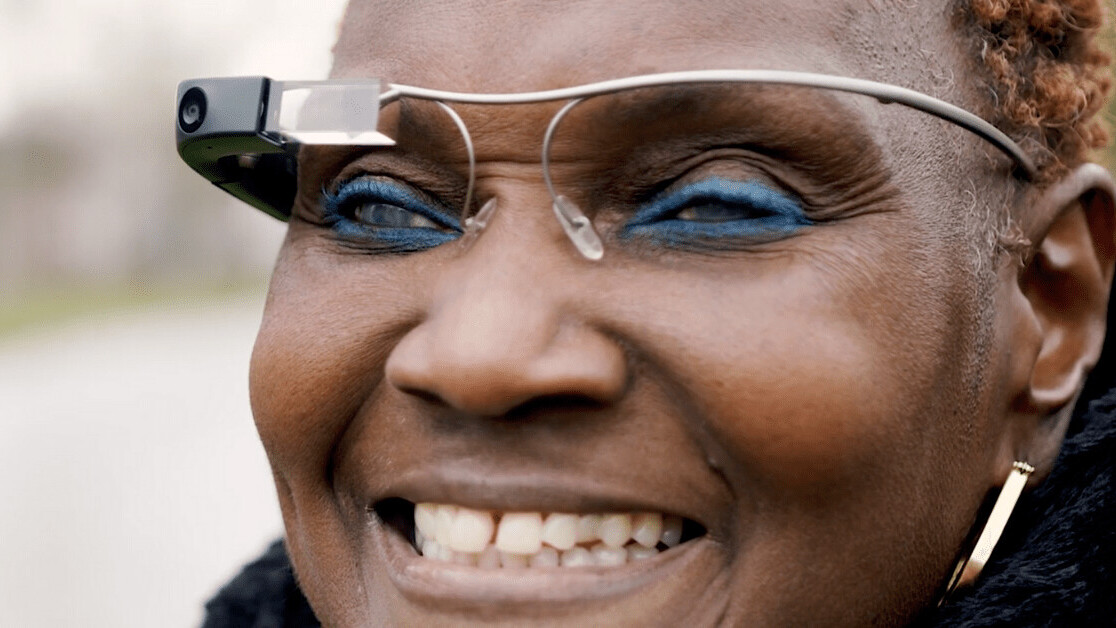Discover Advanced Assistive Tools for People With Aesthetic Disabilities
The landscape of assistive innovation for individuals with visual problems is progressing swiftly, providing an array of innovative devices that boost freedom and engagement. From smart glasses that flawlessly combine aesthetic input with acoustic support to innovative navigating applications that redefine spatial understanding, these tools are reshaping possibilities.
Smart Glasses Innovations
Smart glasses represent a substantial improvement in assistive technology for individuals with aesthetic impairments. Geared up with sensing units and electronic cameras, smart glasses can capture real-time aesthetic details, which is then refined and conveyed to the customer through audio comments or haptic experiences.
Moreover, improvements in expert system have additionally boosted the capabilities of smart glasses. Device learning formulas can recognize faces, checked out message, and recognize things, making them indispensable devices for day-to-day jobs. Individuals can get acoustic signs that give context about their environment, fostering independence and confidence.
Furthermore, the ergonomic style and lightweight nature of lots of wise glasses make them appropriate for extended use, making sure convenience while boosting functionality. As these gadgets remain to advance, they hold the possible to change the means people with aesthetic problems experience their lives, connecting the space between accessibility and modern technology. The recurring study and growth in this field promise to increase the opportunities for wise glasses, making them an important component of contemporary assistive devices.
Navigating Application and Devices
Numerous navigating applications and devices have become essential sources for individuals with visual impairments, significantly boosting their ability to go across strange environments. These modern technologies utilize general practitioner functionality, audio hints, and real-time data to supply individuals with accurate navigating help.
One popular instance is the Aira app, which connects individuals to skilled representatives that can provide visual summaries of surroundings and navigating guidance via an online video clip feed. This service improves the individual's spatial awareness and self-confidence while navigating. One more notable device is Seeing Eye GPS, which provides voice-guided navigating and points of rate of interest, enabling individuals to accessibility vital details regarding their environments.

As modern technology remains to advancement, the growth of more advanced navigation tools assures to further encourage individuals with aesthetic disabilities, facilitating seamless wheelchair and assimilation right into diverse atmospheres. Such technologies are instrumental in promoting a more inclusive culture.
Braille Innovation Improvements
In recent times, improvements in Braille technology have dramatically changed how people with visual problems access info and involve with the world around them. The growth of mobile Braille displays has actually revolutionized reading by permitting users to attach wirelessly to computer systems, smart devices, and tablet computers. These tools convert message right into Braille in real-time, enabling seamless interaction with electronic material.
Furthermore, innovative Braille printers have arised, boosting the production of responsive materials. Modern embossers are much faster and a lot more reliable, enabling the quick production of Braille papers and instructional products. This effectiveness reduces the moment and expense linked with producing Braille resources, making them much more easily accessible to organizations and colleges.
Additionally, the integration of Braille with various other modern technologies, such as expert system and artificial intelligence, has actually opened up new avenues for personalized learning experiences. Voice recognition and synthesis modern technologies can enhance Braille, giving an inclusive approach to details dissemination.
As the need for comprehensive education and learning and work environment environments grows, these technical innovations play an essential role in encouraging people with visual eye center impairments, guaranteeing they have equal access to information and possibilities in numerous elements of life.
Wearable Devices for Independence
An expanding variety of wearable devices is boosting freedom for people with visual problems, supplying ingenious solutions that enhance navigating and daily living. Braille displays and notetakers. These tools utilize innovative modern technologies to supply real-time feedback and support, advertising autonomy in different settings

Wearable modern technology also includes smartwatches that can be configured with ease of access functions, making it possible for customers to get notices, track their areas, or perhaps call for help with the touch of a click for source switch. In addition, some devices include man-made knowledge to examine the environment, offering audio descriptions of neighboring things or people.
Voice-Activated Assistive Solutions
Leveraging voice-activated assistive solutions has actually changed the landscape of assistance for individuals with visual problems, giving hands-free communication and access to a range of jobs. These modern technologies make use of natural language handling and expert system to allow users to execute day-to-day activities through straightforward voice commands.

Furthermore, recent developments in voice recognition precision have boosted the customer experience substantially, accommodating varied accents and speech patterns. This inclusivity ensures that more individuals can gain from these innovations, fostering a greater sense of autonomy.
Final Thought
To conclude, the development of innovative assistive tools considerably enhances the self-reliance and quality of life for people with aesthetic impairments. Advancements such as wise glasses, navigation apps, Braille modern technology, wearable gadgets, and voice-activated solutions collectively promote an even more comprehensive setting. These technologies equip customers to browse their environments with confidence and engage even more totally with the globe, ultimately promoting better ease of access and important site level playing fields for people facing aesthetic obstacles.
The landscape of assistive innovation for individuals with visual disabilities is evolving rapidly, providing an array of cutting-edge tools that enhance freedom and interaction.Smart glasses represent a considerable advancement in assistive innovation for individuals with visual impairments. As these tools proceed to evolve, they hold the possible to change the way individuals with visual impairments experience their day-to-day lives, connecting the space between accessibility and technology.In current years, advancements in Braille modern technology have actually significantly transformed just how people with aesthetic impairments accessibility info and engage with the globe around them. These modern technologies empower users to browse their surroundings with confidence and involve more totally with the globe, ultimately advertising higher ease of access and equal possibilities for people facing aesthetic obstacles.
Comments on “The Future of Assistive Technology for the Blind: Empowering Independence”